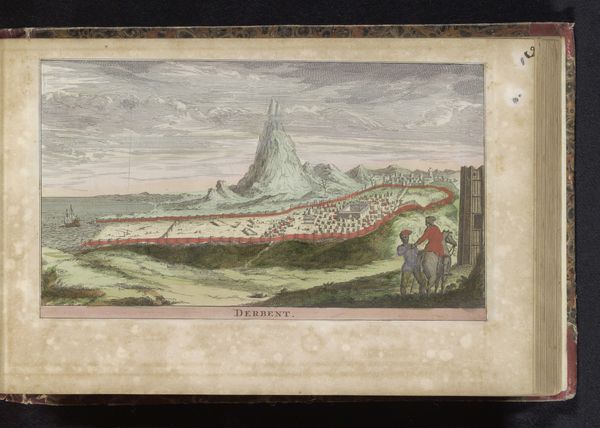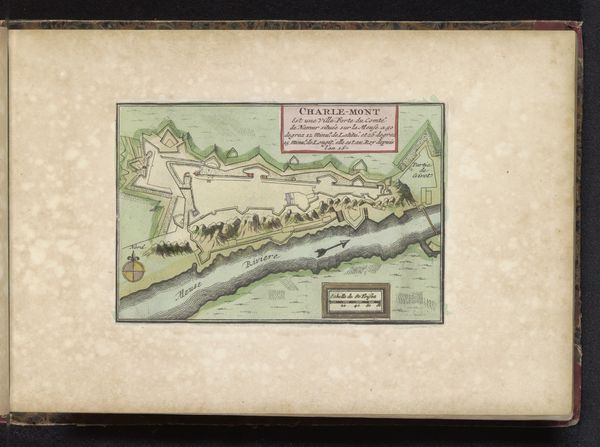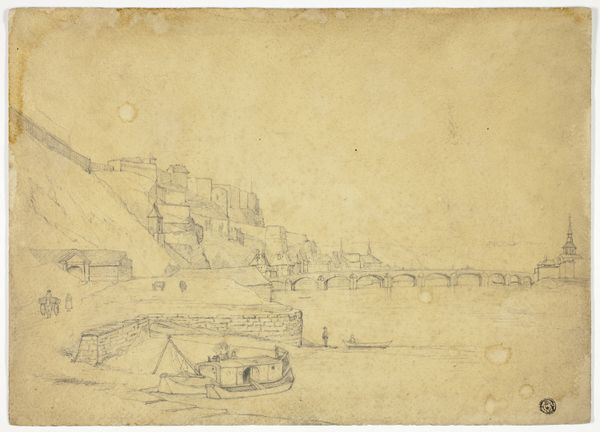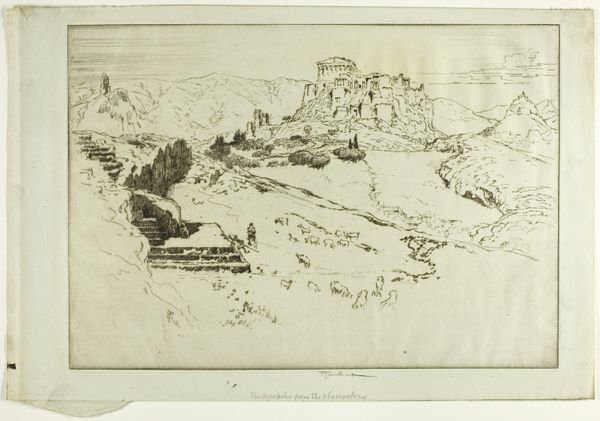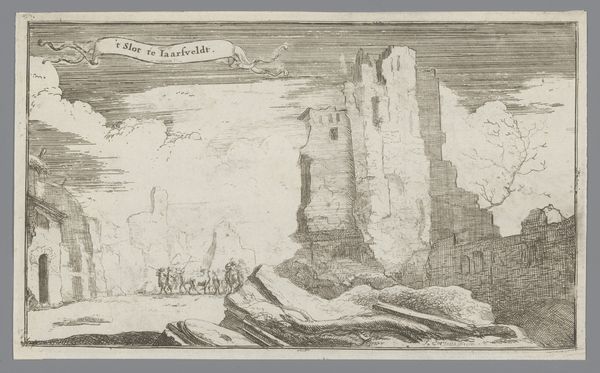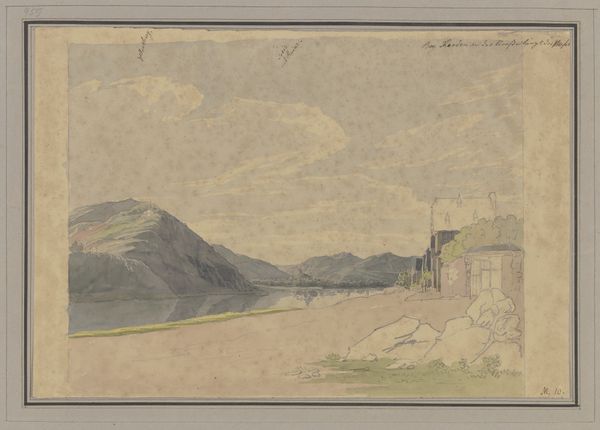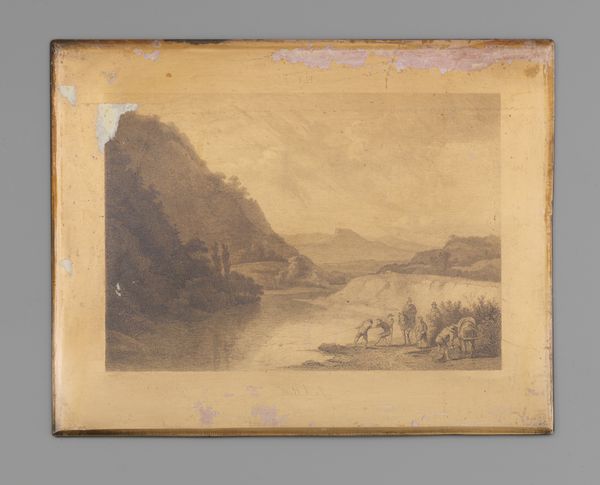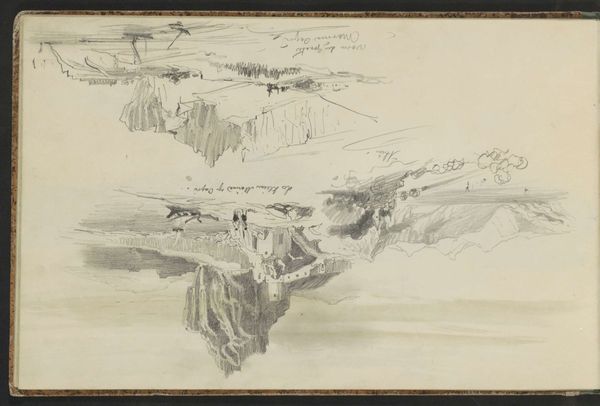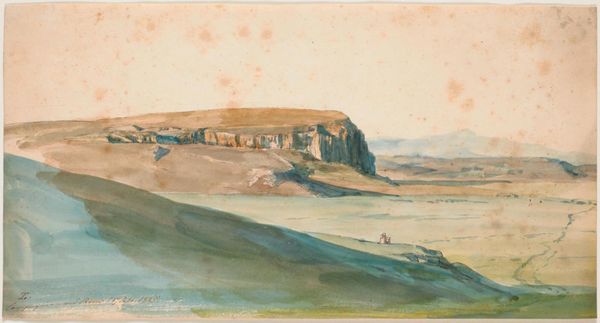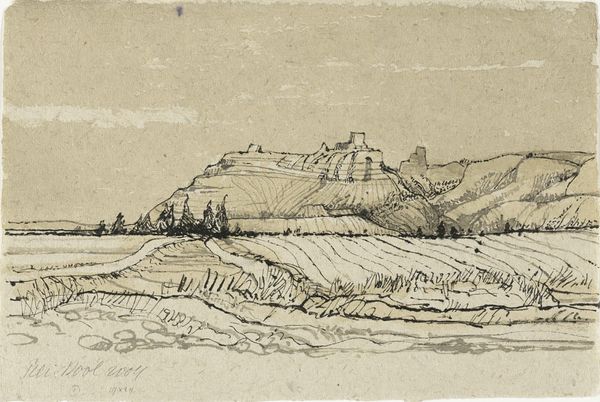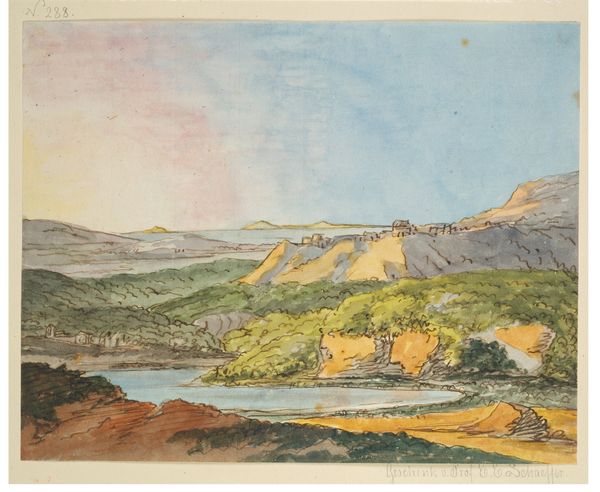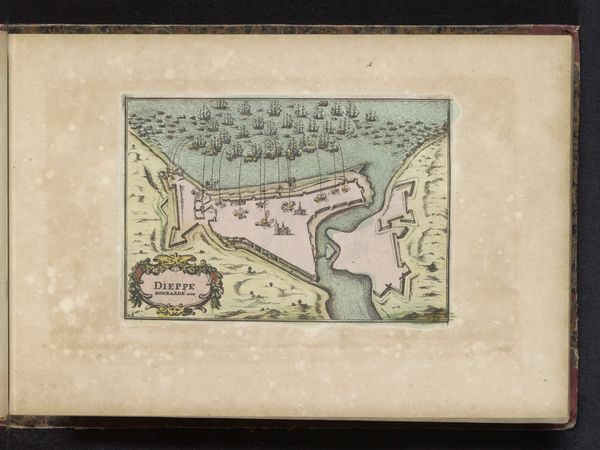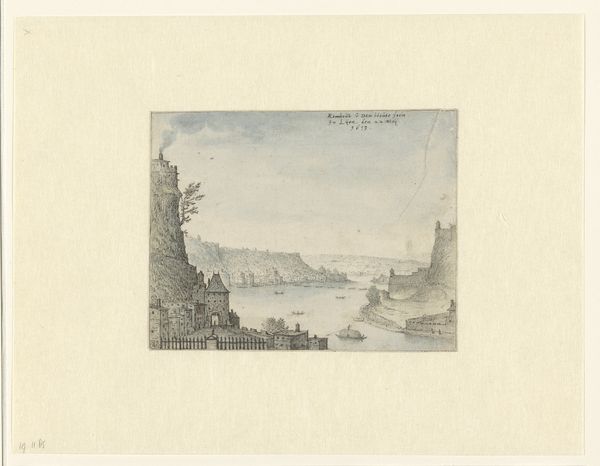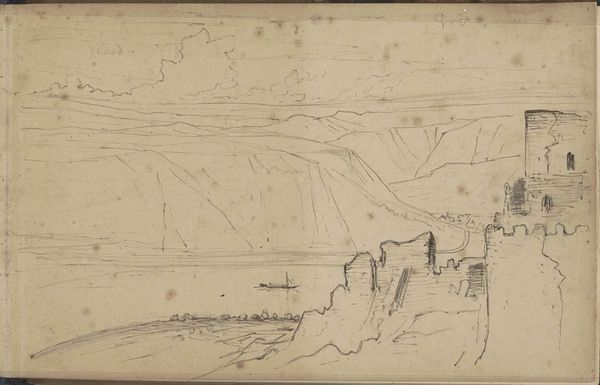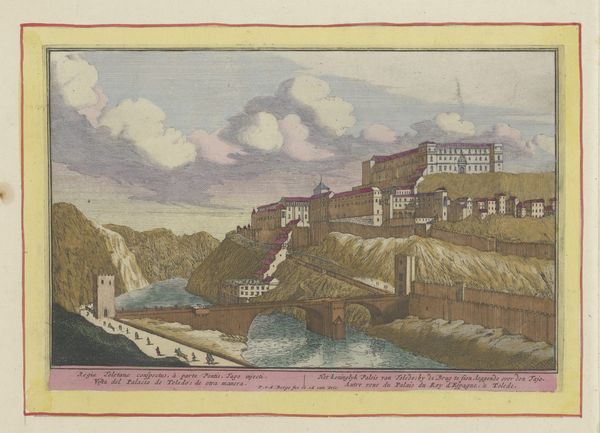
Father Hennepin and Companions Passing Lover's Leap. April 1680 1847 - 1848
0:00
0:00
painting, gouache
#
water colours
#
painting
#
gouache
#
landscape
#
watercolour illustration
#
history-painting
#
watercolor
Dimensions: overall: 37.8 x 56.2 cm (14 7/8 x 22 1/8 in.)
Copyright: National Gallery of Art: CC0 1.0
Editor: Here we have George Catlin's "Father Hennepin and Companions Passing Lover's Leap, April 1680," painted between 1847 and 1848 using watercolor. I find the multitude of canoes arranged in neat rows really striking. What do you see in this piece, especially concerning visual symbols? Curator: I am intrigued by the canoes and the cliff, as icons. The canoes represent the voyagers, and their placement hints at cultural exchange. Notice the procession; it echoes motifs of journeys found in diverse cultures and underscores the narrative of exploration and passage into the unknown. Now, what do you make of the geological formations—the cliffs themselves? Editor: They are monumental and awe-inspiring, seeming to watch over the travellers. They definitely dwarf the human figures, perhaps symbolizing the power of nature. Curator: Precisely. Cliffs are often read as symbols of strength, permanence, and the sublime. "Lover's Leap" adds another layer of meaning, layering romance, tragedy, and myth onto this geological icon. These natural formations have pre-existing, often indigenous, narratives attached. Catlin presents us with a complex interplay, right? It also begs us to examine his cultural viewpoint, his memory as it were, regarding the depicted event. Does he respect it, rewrite it? Editor: I hadn't considered that before, viewing it through that lens changes everything. The artist seems to use recognizable visual shorthand to tell the story, simplifying potentially complex history. Curator: Exactly! So, it also asks the viewer to actively participate in decoding his personal encoding. Are the symbols accessible or obfuscating, inviting curiosity, or discouraging conversation? Food for thought. Editor: This perspective on visual symbolism has opened a whole new avenue for understanding the artwork. Curator: I concur! Decoding images connects the past with the present, creating dialogues that span centuries.
Comments
No comments
Be the first to comment and join the conversation on the ultimate creative platform.
